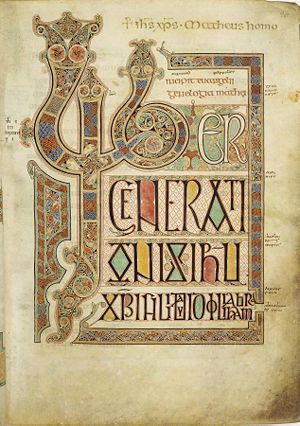

Portal maintenance status: (June 2018)
|
Anglo-Saxon England
Anglo-Saxon EnglandorEarly Medieval England, existing from the 5th to the 11th centuries from soon after the end of Roman Britain until the Norman Conquest in 1066, consisted of various Anglo-Saxon kingdoms until 927, when it was united as the Kingdom of England by King Æthelstan (r. 927–939). It became part of the short-lived North Sea EmpireofCnut, a personal union between England, Denmark and Norway in the 11th century. The Anglo-Saxons migrated to Britain from mainland northwestern Europe after the Roman Empire withdrawal from the isle at the beginning of the 5th century. Anglo-Saxon history thus begins during the period of sub-Roman Britain following the end of Roman control, and traces the establishment of Anglo-Saxon kingdoms in the 5th and 6th centuries (conventionally identified as seven main kingdoms: Northumbria, Mercia, East Anglia, Essex, Kent, Sussex, and Wessex); their Christianisation during the 7th century; the threat of Viking invasions and Danish settlers; the gradual unification of England under the Wessex hegemony during the 9th and 10th centuries; and ending with the Norman Conquest of England by William the Conqueror in 1066. The Normans persecuted the Anglo-Saxons and overthrew their ruling class to substitute their own leaders to oversee and rule England. However, Anglo-Saxon identity survived beyond the Norman Conquest, came to be known as Englishry under Norman rule, and through social and cultural integration with Romano-British Celts, Danes and Normans became the modern English people. (Full article...) Refresh with new selections below (purge) Selected articleThe Battle of Hastings occurred on 14 October 1066 during the Norman conquest of England, between the Norman-French army of Duke William II of Normandy and the English army under King Harold II. It took place at Senlac Hill, approximately 10 km (61⁄4 miles) northwest of Hastings, close to the present-day town of Battle, East Sussex, and was a decisive Norman victory. Harold II was killed in the battle—legend has it that he was shot through the eye with an arrow. He was the last English king to die in battle on English soil until Richard III was killed at the Battle of Bosworth Field. The battle marked the last successful foreign invasion of the British Isles. Although there was further English resistance, this battle is seen as the point at which William gained control of England, becoming its first Norman ruler as King William I. The famous Bayeux Tapestry depicts the events before and during the battle. Battle Abbey marks the site where it is believed that the battle was fought. Founded by King William "the Conqueror" (as he became known), it serves as a memorial to the dead and may have been an act of penance for the bloodshed. The site is open to the public and is the location of annual re-enactments of the battle.(more...) Did you know?
Subcategories Selected image
Folio 27r from the Lindisfarne Gospels contains the incipit from the Gospel of Matthew. The Lindisfarne Gospels (now kept in the British Library) is an illuminated manuscript gospel book produced around the year 700. Selected biographyWiglaf (died 839) was King of Mercia from 827 to 829 and again from 830 until his death. His ancestry is uncertain: the 820s were a period of dynastic conflict within Mercia and the genealogy of several of the kings of this time is unknown. Wigstan, his grandson, was later recorded as a descendant of Penda of Mercia, so it is possible that Wiglaf was descended from Penda, one of the most powerful seventh-century kings of Mercia. Wiglaf succeeded Ludeca, who was killed campaigning against East Anglia. His first reign coincided with the continued rise of the rival Anglo-Saxon kingdom of Wessex under Egbert. Egbert drove Wiglaf from the throne in 829, and ruled Mercia directly for a year. Wiglaf recovered the kingdom in 830, probably by force although it may be that Wiglaf remained subject to Egbert's overlordship. Mercia never regained the south-eastern kingdoms, but Berkshire and perhaps Essex came back into Mercian control. The causes of the fluctuating fortunes of Mercia and Wessex are a matter of speculation, but it may be that Carolingian support influenced both Egbert's ascendancy and the subsequent Mercian recovery. Although Wiglaf appears to have restored Mercia's independence, the recovery was short-lived, and later in the century Mercia was divided between Wessex and the Vikings. Wiglaf died in about 839, and was probably succeeded by Beorhtwulf, though one tradition records his son, Wigmund as having reigned briefly. Wiglaf is buried at Repton, near Derby. (more...) Things you can do
Featured articles and lists
Related portalsWikiProjectsAssociated WikimediaThe following Wikimedia Foundation sister projects provide more on this subject:
Commons
Wikibooks
Wikidata
Wikinews
Wikiquote
Wikisource
Wikiversity
Wiktionary
| |||||||||||